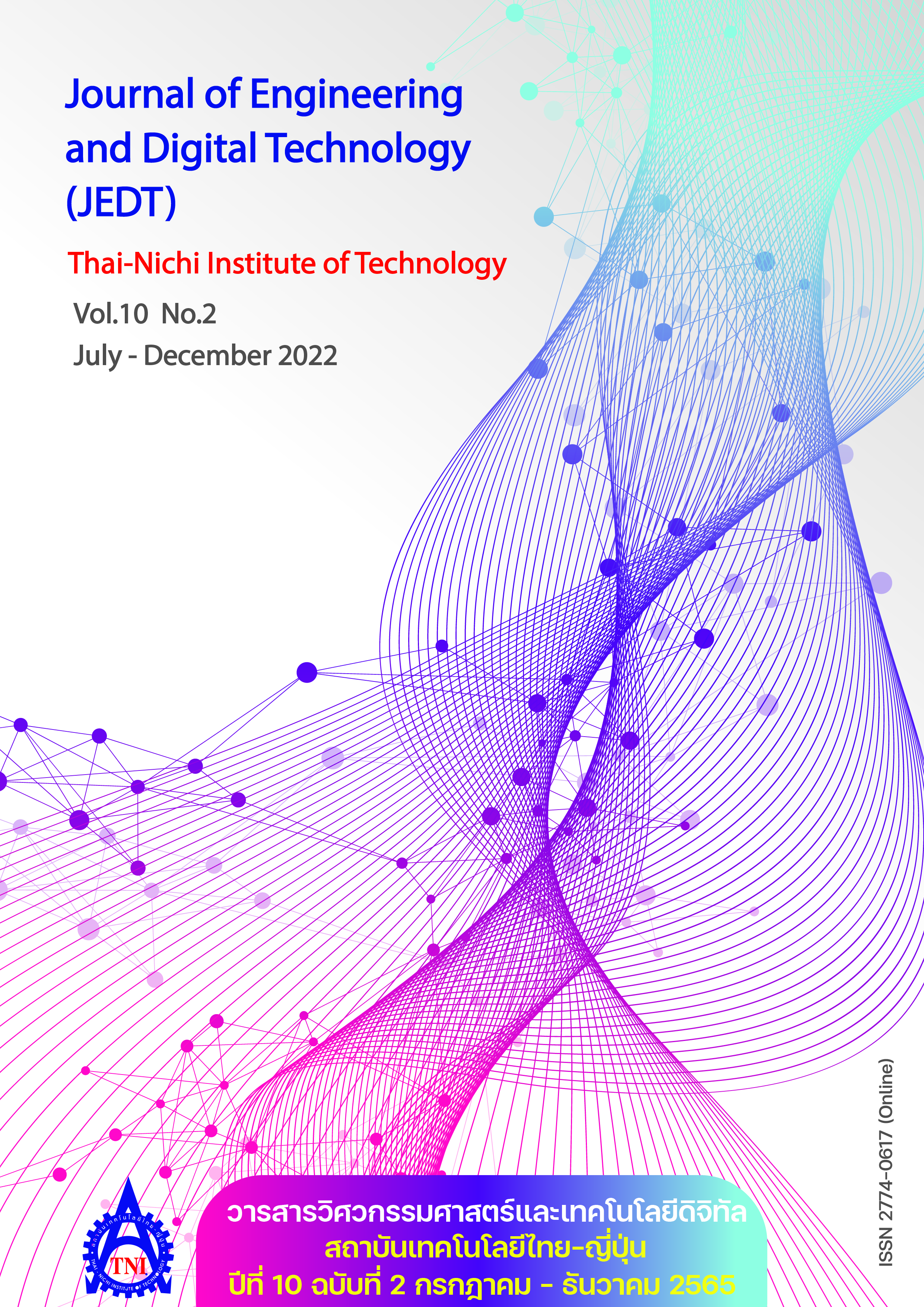Performance Improvement of Tree Algorithm Using Adaptive Splitting Algorithms
Main Article Content
Abstract
In this paper, we propose the Adaptive Splitting Type-1 and Adaptive Splitting Type-2 algorithms that can be used in conjunction with the existing tree algorithms. binary tree and ternary tree algorithms divide users involved in a collision into a constant number of groups. Splitting users into a fixed number of groups without taking into account the number of collision-related users results in lower channel utilization. Therefore, the proposed algorithms are designed to improve the performance of tree algorithms by adjusting the number of groups to be split to match the number of users involved in the collision. It can be observed from the results that Adaptive Splitting Type-1 and Adaptive Splitting Type-2 algorithms perform better binary tree and ternary tree algorithms in terms of average delay, which indicates that the proposed algorithms can be used to enhance the efficiency of the tree algorithms. In particular, the Adaptive Splitting Type-2 algorithm offers the best performance.
Article Details

This work is licensed under a Creative Commons Attribution-NonCommercial-NoDerivatives 4.0 International License.
Article Accepting Policy
The editorial board of Thai-Nichi Institute of Technology is pleased to receive articles from lecturers and experts in the fields of engineering and technology written in Thai or English. The academic work submitted for publication must not be published in any other publication before and must not be under consideration of other journal submissions. Therefore, those interested in participating in the dissemination of work and knowledge can submit their article to the editorial board for further submission to the screening committee to consider publishing in the journal. The articles that can be published include solely research articles. Interested persons can prepare their articles by reviewing recommendations for article authors.
Copyright infringement is solely the responsibility of the author(s) of the article. Articles that have been published must be screened and reviewed for quality from qualified experts approved by the editorial board.
The text that appears within each article published in this research journal is a personal opinion of each author, nothing related to Thai-Nichi Institute of Technology, and other faculty members in the institution in any way. Responsibilities and accuracy for the content of each article are owned by each author. If there is any mistake, each author will be responsible for his/her own article(s).
The editorial board reserves the right not to bring any content, views or comments of articles in the Journal of Thai-Nichi Institute of Technology to publish before receiving permission from the authorized author(s) in writing. The published work is the copyright of the Journal of Thai-Nichi Institute of Technology.
References
T. Zhang and Q. Zhu, “EVC-TDMA: An enhanced TDMA based cooperative MAC protocol for vehicular networks,” J. Commun. Netw., vol. 22, no. 4, pp. 316–325, Aug. 2020.
J. Lee, H. Noh, and J. Lim, “TDMA-based cooperative MAC protocol for multi-hop relaying networks,” IEEE Commun. Lett., vol. 18, no. 3, pp. 435–438, Mar. 2014.
J. Zhang, L. Yang, L. Hanzo, and H. Gharavi, “Advances in cooperative single-carrier FDMA communications: Beyond LTE-advanced,” IEEE Commun. Surv. Tut., vol. 17, no. 2, pp. 730–756, May 2015.
M. Geles, A. Averbuch, O. Amrani, and D. Ezri, “Performance bounds for maximum likelihood detection of single carrier FDMA,” IEEE Trans. Commun., vol. 60, no. 7, pp. 1945–1952, Jul. 2012.
B. Smida, S. Affes, K. Jamaoui, and P. Mermelstein, “A multicarrier CDMA space–time receiver with full-interference-suppression capabilities,” IEEE Trans. Veh. Technol., vol. 57, no. 1, pp. 363–379, Jan. 2008.
X. Peng, K. Png, Z. Lei, F. Chin, and C. C. Ko, “Two-layer spreading CDMA: An improved method for broadband uplink transmission,” IEEE Trans. Veh. Technol., vol. 57, no. 6, pp. 3563–3577, Nov. 2008.
H. Noh, J. Lee, and J. Lim, “ANC-ALOHA: Analog network coding ALOHA for satellite networks,” IEEE Commun. Lett., vol. 18, no. 6, pp. 957–960, Jun. 2014.
H. Baek, J. Lim, and S. Oh, “Beacon-based slotted ALOHA for wireless networks with large propagation delay,” IEEE Commun. Lett., vol. 17, no. 11, pp. 2196–2199, Nov. 2013.
J. Tong, L. Fu, and Z. Han, “Throughput enhancement of full-duplex CSMA networks using multiplayer bandits,” IEEE Internet Things J., vol. 8, no. 15, pp. 11807–11821, Aug. 2021.
A. Maatouk, M. Assaad, and A. Ephremides, “Energy efficient and throughput optimal CSMA scheme,” IEEE/ACM Trans. Netw., vol. 27, no. 1, pp. 316–329, Feb. 2019.
W. Srichavengsup, K. Kittipeerachon, and C. Thongwan, “Improving the performance of IEEE 802.11 DCF with constant contention window by reducing the wasted time slots,” J. Eng. Digit. Technol. (JEDT), vol. 8, no. 2, pp. 39–47, Dec. 2020.
Y. C. Lai and L. Y. Hsiao, “General binary tree protocol for coping with the capture effect in RFID tag identification,” IEEE Commun. Lett., vol. 14, no. 3, pp. 208–210, Mar. 2010.
A. J. E. M. Janssen and M. J. M. de Jong, “Analysis of contention tree algorithms,” IEEE Trans. Inform. Theory, vol. 46, no. 6, pp. 2163–2172, Sep. 2000.
J. I. Capetanakis, “Tree algorithms for packet broadcast channels,” IEEE Trans. Inform. Theory, vol. 25, no. 5, pp. 505–515, Sep. 1979.
B. S. Tsybakov and B. A. Mikhailov, “Random multiple packet access: Part-and-try algorithm,” Problems Inform. Transmiss., vol. 16, no. 4, pp. 65–79, Oct. 1980.
P. Mathys and P. Flajolet, “Q-ary collision resolution algorithms in random-access systems with free or blocked channel access,” IEEE Trans. Inform. Theory, vol. 31, no. 3, pp. 217–243, Mar. 1985.


